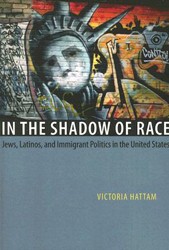How can an ethnic group preserve its urban roots and retain its solidarity while aspiring to greener pastures?
Temple University history professor Lila Corwin Berman tackles this question in Metropolitan Jews: Politics, Race, and Religion in Postwar Detroit. Berman’s narrative provides a comprehensive ethnographic study of Detroit’s Jewish population during the twentieth century and its northwestern exodus as it grappled with evolving notions of civic responsibility amid the city’s growing racial tensions. Berman follows the Jews’ linear path from their first downtown settlement in a riverfront neighborhood called Hastings to the far neighborhoods of Twelfth Street, Dexter and Bagley, and eventually to the suburbs.
But moving their homes, schools and synagogues beyond city limits did not mean that Jews left the city, Berman argues. Instead, Detroit’s Jewish residents fashioned for themselves a metropolitan character, a sense of unity that extended beyond neighborhood lines.
The decades following World War II were marked by quandary: as Detroit’s black population began buying homes in traditionally Jewish neighborhoods,Jews found themselves caught between a loyalty to the city and a fear of plummeting home values. Evincing the scope of the public concern, the National Community Relations Advisory Council, a Jewish booster group, published a “Guide to Changing Neighborhoods” in 1956, urging the Jewish community to confront the protean nature of its neighborhoods or risk the ability to determine its own political narrative about Jewish attitudes toward racism. Fortunately, Jews heeded the warning even as they sought prosperity in suburbs such as Oak Park, Huntington Woods, Southfield, Bloomfield Hills, and West Bloomfield. Though the status of Jews in Detroit looked tenuous at the time — especially after the famous 1967 race riots — history has shown that settlement in the suburbs has only broadened their influence and reach over the metropolitan area through business, philanthropy, and civic organizations.
No city is as notorious for hemorrhaging its mid-century population as Detroit, and no community is as migratory as Detroit’s Jews, as they forged a clear path out of the city and into a new identity. Berman supports her well-researched contention that the postwar migration cemented not a white flight to the suburbs but an “enduring commitment to an expansive new urbanism without geographic borders.” The book will find an especially passionate audience among university professors and students of urban planning, religion and politics, as Berman offers a new perspective on the role of Jews who shaped the Motor City’s political, social and business climate even after they moved beyond its borders.




